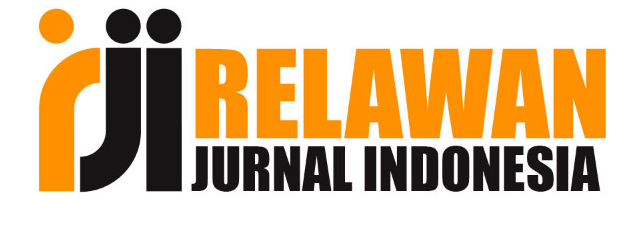STUDI KOMPARATIF PENGGUNAAN METODE CAMEL SEBAGAI ALAT PENGUKUR KINERJA BANK UMUM KONVENSIONAL DAN BANK UMUM SYARIAH
DOI:
https://doi.org/10.36982/jiegmk.v7i2.171Abstract
The purpose of this study was to determine the difference and analyze financial performance and conventional banks Islamic banks. Type approach in this study is the quantitative approach. The research location is a conventional bank and Islamic banks are in Prabumulih. The research design used in this study was a descriptive study and research is quite descriptive comparative study, a study that is looking at or comparing the performance difference with conventional banks and Islamic banks using the CAMEL. The data used in this research is secondary data and primary data. Source data from conventional banks and Islamic banks, in the form of financial ratios in the quarterly financial statements and annual bank. The financial statements used in this study is a three-year financial statements, which 2012-2014.Teknik years of data analysis used in this research is the analysis of financial ratios (financial ratio analysis), the proxy CAMEL (capital, assets, management, earnings, liquidity and sensitivity to market risk). Analysis of financial ratios related to the financial performance of the bank group. This analysis is based on quantitative data is data in the form of figures on the bank's financial statements.
Key words: Leadership, Competence, Career Development, and Performance, Apparatus              Â
References
Abidin, Zaenal. 2007. Kinerja Efisiensi Pada Bank Umum. Proseding Pesat.Yogyakarata. Gunadarma
Almilia, Luciana Spica & Winny Herdiningtyas. 2005. Analisis Rasio CAMEL terhadap Prediksi Kondisi Bermasalah pada Lembaga Perbankan Periode 2000-2002. JurnalAkuntansi dan Keuangan. Vol. 7 No. 2. Nopember.
Aryati, Titik & Hekinus Manao (2002). Rasio Keuangan sebagai Prediktor Bank Bermasalah di Indonesia. Jurnal Riset Akuntansi Indonesia. Vol 5. No. 2.
Bachruddin. 2006. Pengukuran Tingkat Efisiensi Bank umum syariah dan Bank Konvensional di Indonesia dengan Formula Davis Cole’s ROE for Bank. Jurnal Siasat Bisnis. Vol. 11. No. 1.
Bank Indonesia. 2004. Peraturan Bank Indonesia Nomor 6/10/PBI/2004 Tentang Sistem Penilaian Tingkat Kesehatan Bank Umum. 12 April 2004
_____________ .2004. Surat Edaran Bank Indonesia Nomor. 6/23/DPNP Tentang Sistem Penilaian Tingkat Kesehatan Bank Umum. 31 Mei 20014
Helfert. 1996.Analisis Laporan Keuangan. Alih Bahasa: Herman Wibowo. Edisi Ketujuh. Jakarta: Penerbit Erlangga.
Januarti, Indira. 2002. Variabel Proksi CAMEL dan Karakteristik Bank Lainnya untuk Memprediksi Kondisi bermasalah Bank di Indonesia. Jurnal Bisnis Strategi Vol. 10. Desember.
Lembaran Negara RI. 2008. Undang –Undang Republik Indonesia No. 10 Tahun 1998 Tentang Perbankan.
Machfoedz, Mas’ud. 1994.Financial Ratio Analysis and The Predictions of Earnings Changes in Indonesia. Jurnal Kelola. Vol. III. No. 7: 114-137.
Mulyadi. 2001. Sistem Akuntansi. Edisi Ke-3. Cetakan ketiga. Jakarta: Salemba Empat.
Nazir, Moh. 2003. Metode Penelitian. Cetakan ke lima. Jakarta : Ghalia Indonesia.
Paymata & Mas’ud Machfoedz. 1999. Evaluasi Kinerja Perusahaan Perbankan Sebelum dan Sesudah Menjadi Perusahaan Publik di Bursa Effek Jakarta. Jurnal Kelola. Vol. VIII. No. 20: 54-69.
Priyatno, Duwi. 2012. Buku Pintar Statistik Komputer. Yogyakarta: MediaKom
Otoritas Jasa Keuangan. 2014. Booklet Perbankan Indonesia.
Sugiyono. 2010. Metode Penelitian Bisnis. Bandung: Alfabeta.
Thomson, JB. 1991. Predicting Bank Failure in 1980s. Economic Review.Vol.27
Whalen, G & J. Thomson. 1988. Using Financial Data Identify Changes in Bank Condition. Economic Review. Second Quarter.
Downloads
Published
How to Cite
Issue
Section
License
Authors retain copyright and grant the journal right of first publication with the work simultaneously licensed under a Creative Commons Attribution License that allows others to share the work with an acknowledgement of the work's authorship and initial publication in this journal.
Â
Authors are permitted and encouraged to post their work online (e.g., in institutional repositories or on their website) prior to and during the submission process, as it can lead to productive exchanges, as well as earlier and greater citation of published work.
Â
LP2M Indo Global Mandiri University has the right to multiply and distribute the article and every author is not allowed to publish the same article that has been published in this journal.










